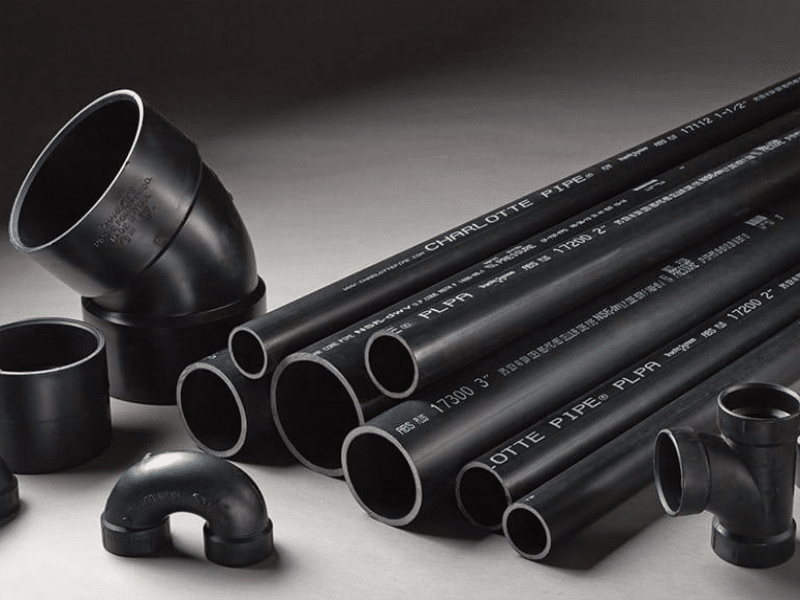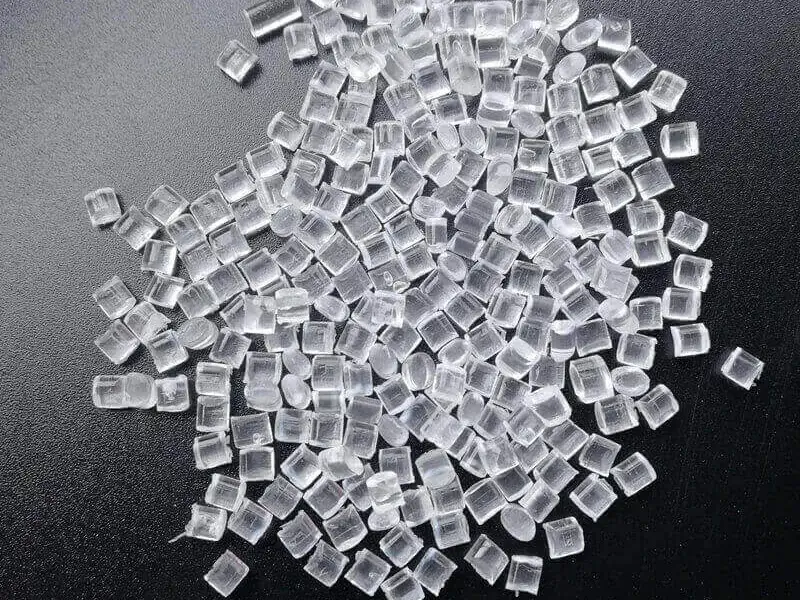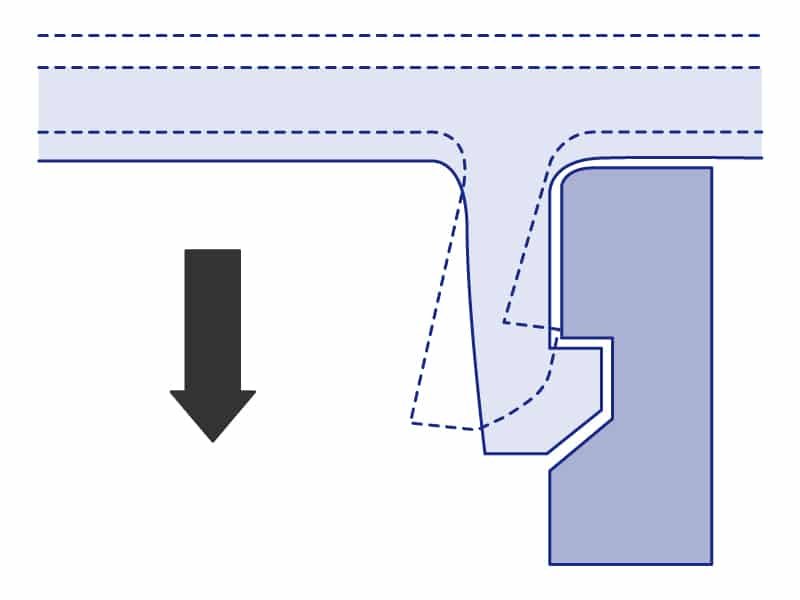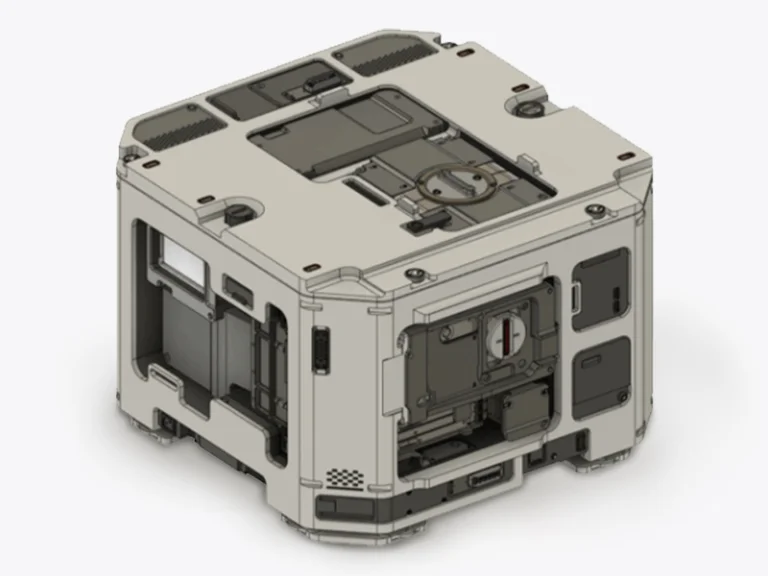Polyvinyl chloride, commonly known as PVC, is one of the most versatile and widely used thermoplastic materials in manufacturing today. PVC machining, when executed with precision, transforms this thermoplastic into high-quality components for industries ranging from construction to healthcare. However, machining PVC presents unique challenges requiring specialized techniques to achieve optimal results. This comprehensive guide explores CNC PVC machining informations you should know.
What is PVC?
Polyvinyl Chloride is a synthetic plastic polymer made from vinyl chloride monomers, ranks as the third most produced plastic globally, celebrated for its cost-effectiveness and adaptability. This thermoplastic excels in diverse applications due to its robust chemical resistance, low moisture absorption, and excellent electrical insulation.
Types of PVC Materials
- Rigid PVC: Known for its high strength and corrosion resistance, uPVC is ideal for pipes, fittings, and window frames in construction. Its rigidity ensures structural stability.
- Flexible PVC: Plasticized with additives, this variant offers high impact strength, making it suitable for cables, hoses, and flooring.
- Chlorinated PVC: With enhanced temperature resistance (up to 95°C), PVC-C is used in hot water systems and industrial piping.
- Modified PVC : Engineered for improved impact resistance, though with slightly reduced tensile strength, PVC-M suits demanding structural applications.
- Oriented PVC : Boasting double the tensile strength of uPVC, PVC-O is perfect for high-pressure pipes and fittings.
Material Properties
Chemical Resistance: PVC is highly resistant to acids, alkalis, and salts, making it suitable for harsh environments.
Electrical Insulation: Its excellent dielectric properties make it a preferred choice for electrical components.
Mechanical Strength: While not as strong as metals, PVC offers sufficient rigidity and impact resistance for many applications.
Thermal Behavior: PVC has moderate heat resistance but is sensitive to high temperatures, which can cause deformation or melting.
| Property | Value / Range | Notes / Implications |
|---|---|---|
| Tensile Strength | 15 MPa (PVC-C at 80°C) to 28–110 MPa | Varies by PVC type and temperature; higher strength in rigid PVC |
| Thermal Expansion Coefficient | ~100 × 10⁻⁶ /K | High expansion requires careful temperature control during machining |
| Operating Temperature Range | 100–200°F (38–93°C) | Exceeding this range risks material softening or deformation |
| Chemical Resistance | Excellent | Resistant to acids, alkalis, hydrocarbons, and weathering |
| Dielectric Strength | High | Provides excellent electrical insulation for conduits, insulators |
| Fire Resistance | Good | Self-extinguishing properties enhance safety in construction |
| Density | ~1.3–1.45 g/cm³ | Depends on formulation; affects weight and machining parameters |
| Hardness (Shore D) | 70–80 | Indicates rigidity; varies by PVC grade |
| Impact Strength | Moderate | Rigid PVC can be brittle; impact modifiers improve toughness |
| Water Absorption | Low | Maintains dimensional stability in humid environments |
Why Choose PVC for Machining?
Combining stability, efficiency, and adaptability, PVC machining offers distinct advantages that set it apart in modern manufacturing.
- Cost-Effectiveness: PVC is significantly cheaper than other thermoplastics like PEEK or ABS, reducing production costs for large-scale projects.
- Durability: Its resistance to corrosion, chemicals, abrasion, and UV exposure ensures long-lasting performance in demanding conditions.
- Versatility: Available in rigid and flexible forms, PVC adapts to applications from structural components to flexible tubing.
- Insulation Properties: With excellent thermal and electrical insulation, PVC is ideal for electronics, conduits, and cable insulation.
- Machinability: PVC’s uniform structure allows for close tolerances (±0.05 mm) and smooth finishes (Ra ≤0.8 μm), streamlining production.

CNC Machining Tips for PVC
CNC machining encompasses a variety of techniques such as milling, turning, drilling, boring, and tapping—many of which are well-suited for processing PVC. However, due to PVC’s low melting point and relatively soft structure, achieving high-quality results requires thoughtful adjustments to tool selection, cutting parameters, workholding, and cooling strategies.
Tool Selection
Use sharp, high-quality carbide or diamond-coated tools to minimize heat generation and reduce the risk of melting or melting-related defects. For cnc milling, high shear or positive geometry cutters reduce stress on the material. When drilling holes ≥1/4 inch, spade bits or plastic-specific drill bits prevent cracking and ensure clean cuts. Dull tools increase the risk of melting or rough surfaces, so regular sharpening or replacement is critical.
Cutting Parameters
PVC’s low melting point requires monitoring tool temperature during machining. Use low to moderate spindle speeds (e.g., 150 SFM) and feed rates to minimize heat generation. Shallow depths of cut, combined with multiple passes, prevent deformation and ensure precision. For example, when milling slots or complex geometries in PVC panels for construction or industrial enclosures, low spindle speeds (6,000–12,000 RPM) and moderate feed rates (0.1–0.3 mm/tooth) help avoid burrs and maintain smooth surfaces. Similarly, turning cylindrical parts like pipe fittings or valve bodies on a lathe benefits from high-speed steel (HSS) or carbide tools with positive rake angles, using low to medium speeds (500–2,000 RPM) and controlled feeds (0.05–0.15 mm/rev) to achieve precise dimensions without thermal distortion.
Clamping and Workpiece Support
Secure the PVC workpiece firmly but avoid excessive clamping force that could deform the material. Use stable fixtures, such as vacuum tables or soft jaws, to minimize vibration and ensure dimensional accuracy. For complex geometries, custom jigs enhance stability during machining, reducing errors. This is particularly important when drilling mounting holes for electrical enclosures or plumbing fixtures, where twist drills with a 90–118° point angle and low feed rates (0.02–0.05 mm/rev) prevent cracking and ensure clean holes, with frequent chip clearing to manage PVC’s stringy swarf.
Cooling and Chip Removal
Utilize air blasts or mist cooling to dissipate heat and clear chips from the cutting zone. Proper chip evacuation prevents recutting of chips, which can mar the surface finish. For shaping PVC sheets or profiles, such as those used in signage or structural components, band sawing or CNC cutting with fine-toothed blades at low speeds (100–200 m/min) produces clean edges and minimizes melting, often aided by air jets for cooling. After machining, finishing techniques like wet sanding with fine-grit abrasives (400–800 grit) or solvent polishing enhance surface smoothness and clarity, especially for transparent PVC parts like display cases. Deburring, using cryogenic deflashing or laser trimming, ensures clean edges for aesthetic applications like medical device housings or consumer goods.
Common Challenges in PVC Machining
Despite its machinability, PVC machining presents challenges that require careful attention:
- Thermal Sensitivity: PVC’s low melting point (100–200°F) risks deformation or melting if cutting generates excessive heat. This necessitates low speeds and effective cooling.
- Chlorine Release: Machining PVC can release chlorine gas, posing health risks. Proper ventilation systems and operator safety measures, such as respirators, are essential.
- Chip Adhesion: PVC’s sticky chips can adhere to tools, clogging flutes and causing rough finishes. Effective chip removal systems, like high-pressure air or coolant jets, mitigate this issue.
- Material Rigidity: Rigid PVC is prone to cracking or chipping under excessive force, particularly with dull tools or high feed rates. Sharp tools and gentle parameters are crucial.
- Thermal Expansion: PVC’s high thermal expansion coefficient (~100 × 10⁻⁶/K) affects dimensional stability, making tight tolerances challenging in uncontrolled environments.
- Surface Roughness and Burrs: Improper tool geometry or cutting parameters can result in rough surfaces and burr formation, necessitating additional finishing.
Surface Treatment and Tolerance Control
Achieving a polished finish and precise tolerances is critical for PVC machining applications.
Surface Finish
With sharp tools and optimized parameters, machining PVC yields smooth finishes (Ra ≤0.8 μm). Secondary operations such as sanding, polishing, or flame treatment can enhance surface smoothness and gloss. Especially vapor polishing enhances aesthetics by creating a glossy, uniform surface, ideal for visible components like signage. Scratch-resistant coatings, applied after cleaning, improve durability and UV resistance. For intricate parts, bead blasting can mask minor imperfections while maintaining a consistent texture.
Painting and Coating
PVC’s chemical resistance can hinder paint adhesion, so surface preparation is key. Cleaning with isopropyl alcohol and applying a primer ensures strongWarren paint bonds effectively. Specialized coatings, such as UV-resistant layers, enhance longevity for outdoor applications like window frames.
Tolerance Control
Standard tolerances for plastics are ±0.25 mm, but PVC machining can achieve ±0.05 mm or tighter (±0.01 mm for high-precision setups) with proper calibration. PVC’s thermal expansion requires controlled environments (e.g., 20–25°C) to maintain dimensional stability. Coordinate Measuring Machines (CMMs) and Non-Destructive Testing (NDT) verify tolerances, ensuring compliance with specifications.
Applications of Machined PVC Parts
The versatility of PVC and the precision of machining have led to its widespread use in various sectors:
Construction: Pipes, fittings, window profiles, and decorative panels.
Medical: Components for devices, housings, and connectors, benefiting from PVC’s biocompatibility and sterilizability.
Electrical and Electronics: Insulators, cable jackets, and enclosures due to excellent electrical insulation.
Industrial Equipment: Valves, seals, and machine parts exposed to corrosive chemicals.
Consumer Goods: Toys, household items, and protective cases.

Enhancing PVC Machining Quality: Best Practices
To maximize the quality and efficiency of PVC machining, consider the following best practices:
- Material Selection: Choose the appropriate PVC grade based on mechanical, thermal, and chemical requirements.
- Tool Maintenance: Regularly inspect and replace cutting tools to maintain sharpness and prevent defects.
- Process Optimization: Continuously refine cutting speeds, feeds, and cooling methods based on real-time feedback.
- Workpiece Handling: Use proper fixturing and support to prevent deformation and ensure repeatability.
- Environmental Control: Maintain stable temperature and humidity in the machining area to reduce thermal distortion.
- Operator Training: Ensure machinists are knowledgeable about PVC’s characteristics and machining nuances.
- Safety Measures: Use robust ventilation systems to manage chlorine gas release, protecting operators and maintaining workplace safety.
- Quality Monitoring: Implement in-process inspections and post-machining quality checks to catch defects early.
Conclusion
Machining PVC is a sophisticated process that balances the material’s unique properties with precise tooling and process control. From understanding the types and characteristics of PVC to mastering the nuances of CNC machining, successful fabrication requires attention to detail and adaptability. At Jiangzhi, we integrate on-demand manufacturing capabilities with professional and precision PVC machining services to deliver high-quality parts exactly when you need them. Contact Jiangzhi today!





